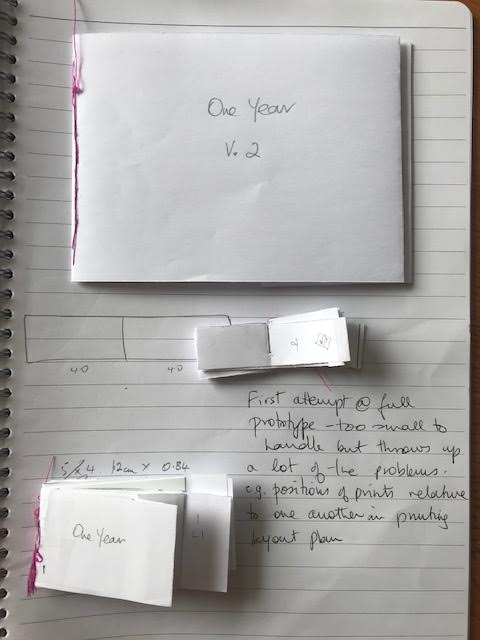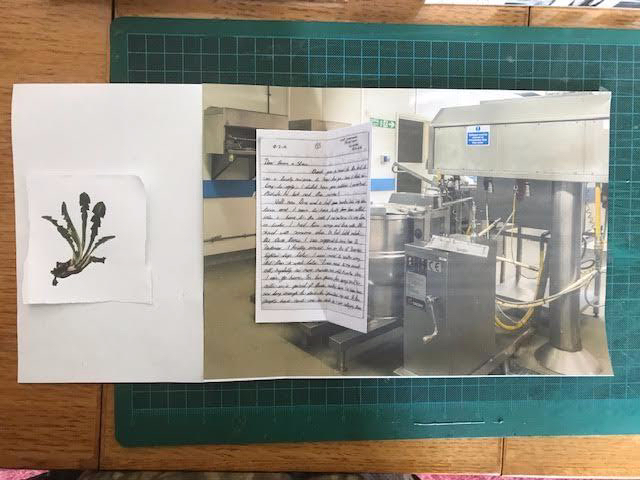A film of the final version of the book is here.
The book I submitted for BoW assessment could not be used again as the assessors felt that the different elements in it, the plants, the prison images and the letters did not gel. Then I went to the FORMAT festival where I was told that the Blurb book of my body of work was too ‘corporate’, meaning that the paper and cover were too glossy and the pagination reflected a ‘corporate’ ethos which, I was told, was not sympathetic to my subject.
At this point I realised that there were 3 inter-linked binaries at work in my project:
- my letters to Ian and Ian’s replies;
- inherent in that binary is another: inside – outside, which is also in the methodology of the project: Michel Foucault’s heterotopia: a world within a world;
- inherent in the inside-outside, are the concepts of place and time, which mean different things to those inside and outside.
Three months down the road and I am working with artist Susan Coulson who has made numerous books of her own artwork. With one month to go, Susan is panicking.
The book I am trying to emulate is Martin Cregg’s ‘Midlands’ because I think the paper, the layout and the images all hang together very well. I saw the book and bought it at last year’s PhotoIreland in Rosscommon after I had been to see Brian Cooney’s degree show.
What could be simpler than put my images together, find a suitable paper and print away?
The first version which included my letters to Ian was too clumsy:


Version 3: too small to handle.



- Trying to sort out the complex insert to fit camouflaged into the spine.
I then printed a half-size version on my A4 printer and used a book fellow-student Sarah had lent me on how to construct a book: Annette Hollander: Bookcraft which taught me how to stitch the ‘signatures’ together. I planned my book layout and was short of a couple of images so I decided to include facsimiles of my whole letters rather than selected pages.
I have 7 signatures with 6 letters from me and 6 responses from Ian. I am quite pleased with this half dummy but am anxious to see the final, full-sized dummy.
- The front page ( not the cover) and the 7 signatures sewn up.

I am now working on the dummy printing on a 600mm, 120gpm plain paper. I investigated double-sided inkjet papers and found I had a choice of one. Trying to track it down to someone who could supply it without having a minimum charge of £200 was another epic journey of discovery. I now have a small roll and will print out the individual pages as soon as I am confident with the printer and with the composition of the book. Next week I am visiting my friend Susan Coulson who will show me how to fold the pages and make up the cover.
7th June:
Visit to Sue C: I have come out of it feeling every one of the million wasps in my brain! Sue is a wonderful artist but not a teacher: each instruction was confused by a million other, unrelated ones. At first I was asked to fold my sheets as instructed and leave them in a particular place. I started doing this, which is not complicated but a new skill to me. After having done 3, I was told that I was too slow & Sue needed to move on. More misunderstandings followed, my folded sheets had been moved because they were in the way, and I went home.
A week later, Sue emails me saying that she is panicking because she does not think I will finish the book in time. I did not tell her at that point that I was making 2 books – the first where I hoped to make all my mistakes, and then the ‘good’ copy. Two weeks later & I had made both books – I did make mistakes in the first one and then different mistakes in the second. These are skills based activities in which you make progress by making mistakes – much like my quilt. i was not going to make the fear of making mistakes stop me from learning new skills.
